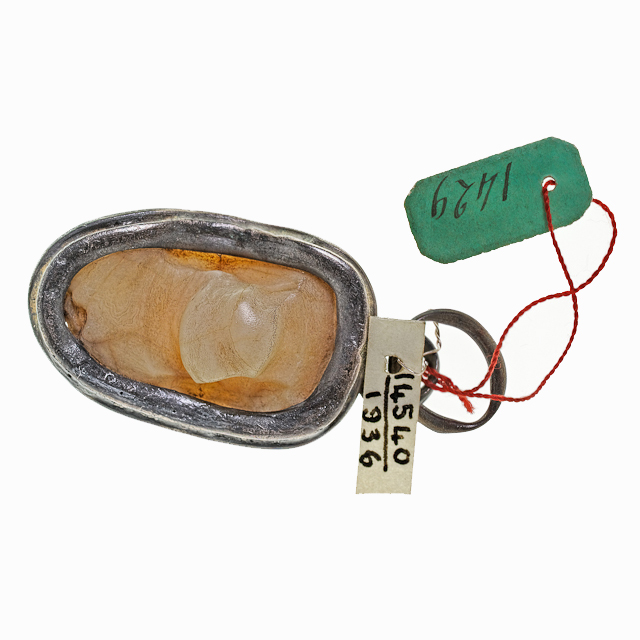Fish Otolith, Spain


Transferred from the Wellcome Institute in 1985; 1985.52.78
The pearly white stone in this silver pendant is actually a fish otolith. Otoliths are calcium carbonate structures found in the heads of all fish species except sharks and rays, and are used for hearing and balance. Just like the rings in a tree trunk, the grooves in an otolith indicate the age of the fish that it came from. According to collectors these grooves, which are shaped like the letters ‘J’ and ‘L’, are also said to represent joy and love, or luck.
Sometimes known as lucky stones or fish pearls, otoliths have been carried in the pockets of fishermen and sailors to keep them safe from storms, and found at ancient archaeological sites, suggesting that they have been of ritual use for millennia. They have also been used to treat many different medical conditions throughout the ages, from malaria and jaundice to urinary infections, kidney and bladder stones, and even nosebleeds.
Otoliths continue to be used as treatments in some parts of the world today. In Brazil, fishermen boil these lucky stones to make a tea, which they drink in the belief that it will protect them from being stung by a fish. They also carry the stones in their pockets to ward off back pain. In Spain, otolith amulets are worn to protect against fever.






